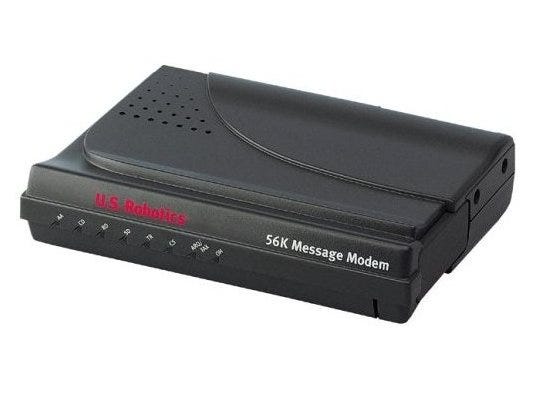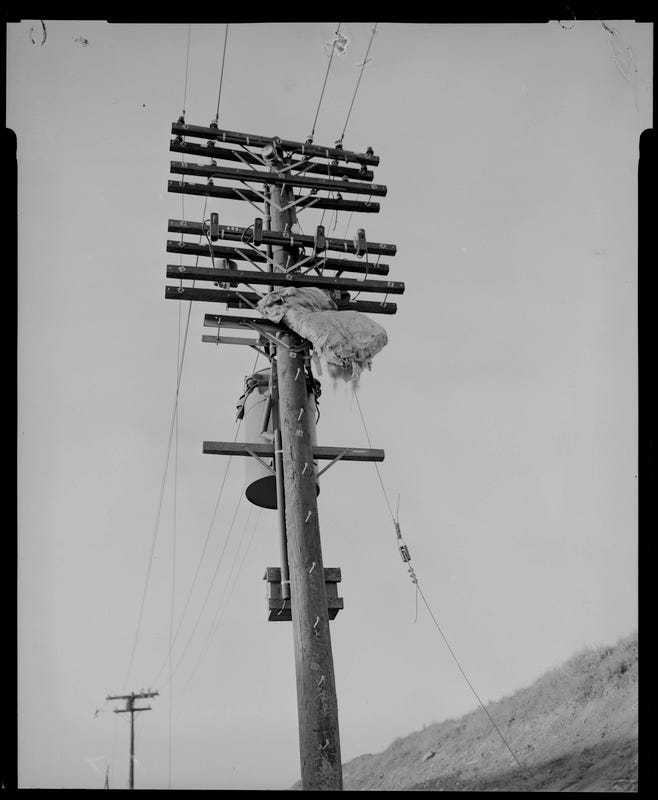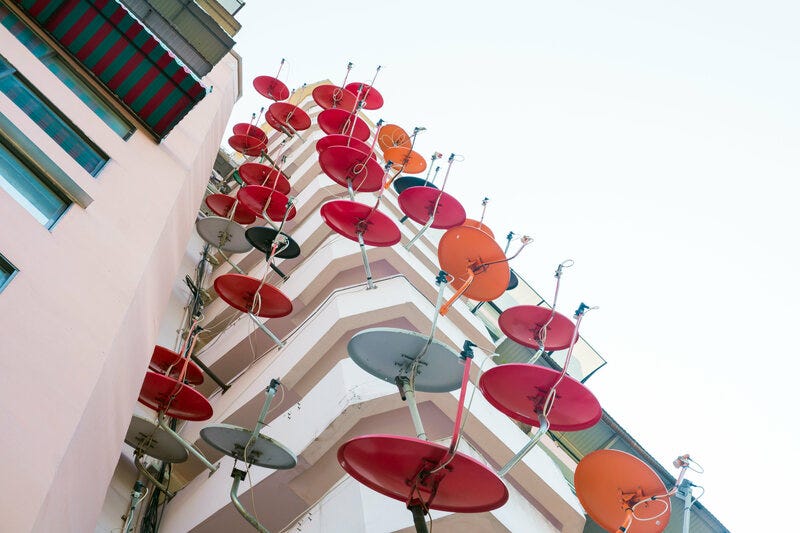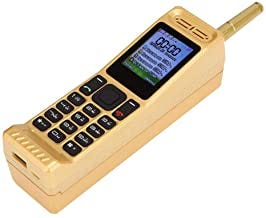Thin Pipe, Part I
My Strange, Slow, Twenty-Year Quest for Broadband
I live in a tiny town in Central Massachusetts. No traffic lights, still a fair number of dirt roads, and probably a bigger turkey population than people. We moved here in 1992 for the peace-and-quiet, fresh air, and natural beauty of the area.
Who am I kidding? Yes that stuff.. but mostly because housing prices closer to Boston had gone insane, and this was a way to get a decent-sized house and yard on our budget. We factored in all sorts of stuff when we decided to move here. Market prices, crime rates, school system, taxes. But in 1992, one thing was not on our analysis list: connectivity.
Because in 1992, the internet wasn’t around. Ok, sure. It existed in some form, but not for the average consumer: no web, no cell phones, even dial-up was in its infancy. I had a dial-up modem and terminal so I could log into our systems at work, but that was about it.
Things of course changed rapidly from there. AOL, CompuServe and other services popped up, and I soon found out that connectivity was going to be a problem in our house. Our dialup speed, about 26K bits/sec, was ok-ish for terminal use with our company’s mainframe. But even before the web, these outside internet services were demanding more, bringing in images, sound, and other bandwidth-chewing features.
28Kb/sec didn’t cut it any more, and the cool kids now had 56K modems. This would be my introduction into the ongoing theme of my house: low bandwidth. Because when I went out and bought a spiffy 56K modem, my connection speed stayed, stubbornly, at 26Kb/sec. “Noise on the line can affect your modem’s performance”, the manual said. Lots of calls to the phone company. Eventually a tech checked the line, said there was basically nothing wrong, but that I lived four miles away from the Central Office, which is probably a reason why the line quality wasn’t perfect.
I eventually got the phone company to swap me to another line, and eked out an occasional 33kb/sec speed. But things were moving faster. “Digital Subscriber Lines”, or DSL, were being promoted as the solution to the bandwidth problem. Running at an “amazing” 1Mb/sec. Friends in town signed up, and were soon downloading funny cat .gifs and pirating .mp3’s.
But the same issues I had with modems cropped up with DSL. Being four miles from the central office, ruled out any chance of getting the service. Lots of calling through the Verizon phone tree trying to get technical support, lots of begging about extending DSL to us, with no luck.
Internet! Without Phone Lines!
Meanwhile, in other more fortunate towns, people were getting something called “Broadband”. In 2000 remember seeing a Media One truck drive by with the slogan “This is Broadband. This is the Way.” sprawled across it, and wondering what it even meant. I soon found out, as most of my friends and coworkers subscribed to various broadband services, mostly via modems running over their existing cable TV service.
Our town however missed the boat on cable internet, because it has passed on cable TV a decade or more earlier. It was an issue of short telephone poles. Turns out, there are pretty fixed rules about minimum spacing between the various zones of a telephone pole. High voltage, domestic/home voltage, communication areas of the pole have to be spaced apart for safety reasons.
A lot our poles were put in decades before cable was a thing, and had just enough room for electric and phone cables. So when the cable companies started wiring towns, they wanted us to pay for upgrading the poles. And the town refused, because it would have been expensive to do and no one thought it to be an urgent thing. The Cable companies passed us by, and we became the only town around without cable. People in town largely turned to satellite dishes to get the equivalent paid programming - or as my cord-cutting friends would refer to it: “cable in the sky.”
This worked fine for TV, and when I heard these satellite companies were beginning to offer internet service as well, I was excited and signed up, almost immediately. The early system I had was something called ‘dial return’ service, where you used your phone modem for outbound connections, and got inbound data over the dish. I spent a lot of time hunting on my heavily-wooded lot trying to find clear sky to mount the dish, eventually settling on a large pine tree next to the house. But it worked, and I eventually got 2-way satellite, Hughes DirecWay, and later, ViaSat WildBlue.
Can’t Work Today, It’s Raining in Texas
And data streaming was great. When it worked. The story was always the same, no matter what satellite system I tried. Rain and snow would either reduce bandwidth, or cut it off, entirely. I remember trying to use satellite internet for telecommuting. It was awful even when it worked, because although the bandwidth was good, the ping time / round-trip delay was enormous, such that if I was logged into something at work, I would type a key, wait, and then see what I typed a second later.
At meetings, I was frequently the guy who dropped at the wrong time. For whatever reasons the rain gods conspired to create bad weather whenever I had an important meeting or demo to give. I remember once having the signal go out on a clear blue day, and calling tech support to see what was going on. I suspected some sort of maintenance thing that they also tended to schedule at inconvenient times. I told the support staff I couldn’t find anything wrong on my side since it was clear weather.
They told me “Oh, it’s raining in Galveston Texas pretty hard.”
“Galveston Texas?” I asked.
“Yes this is where our uplink dishes are, and its causing a brief outage of service.”
So not only did I have worry about me not getting a signal, I had to worry about Texas not getting a signal, because the internet bits I wanted needed to go from the internet, uplink dish in Texas to a satellite 22,000 miles away, and then back down to my house, without rain or snow or birds or whatever getting in the way in either spot.
And I was not the only one who was struggling. Many in town were in the same connectivity boat — too far from the central office for DSL, not happy with satellite as an alternative. Our municipal light department decided to do something about it, and implemented a wireless internet system using WiMax technology - kind of like WiFi on steroids.
And The Bits Shall Come Down Off The Mountain
One of our few town assets, apart from dirt roads and trees, was a 2000-foot-high mountain in the middle of town. Long in use as a microwave relay point and other antenna location, the mountain summit became the center point of our WiMax network, which also included 21 90-foot fiberglass relay poles spread around town. Users of the system would set up a 900Mhz antenna and point it towards their local pole, which would relay via line-of-sight to the main station on top of the mountain.
Advertised speeds for downloads was up to 1Mb/second. A paltry number by even DSL standards, which had grown to run up to 3Mb/sec for subscribers who were lucky enough to be close to the central office. But this was 1MB/second with decent ping times, so it enabled things like working from home in a way satellite could no deliver.
I was an early subscriber, and when I started I was getting speeds of maybe 700Kb/sec, which still meant Netflix had to be set to super low res, and the kids learned how to wait for it to buffer for 15 minutes before watching a show. But it was useable for work, and general web stuff.
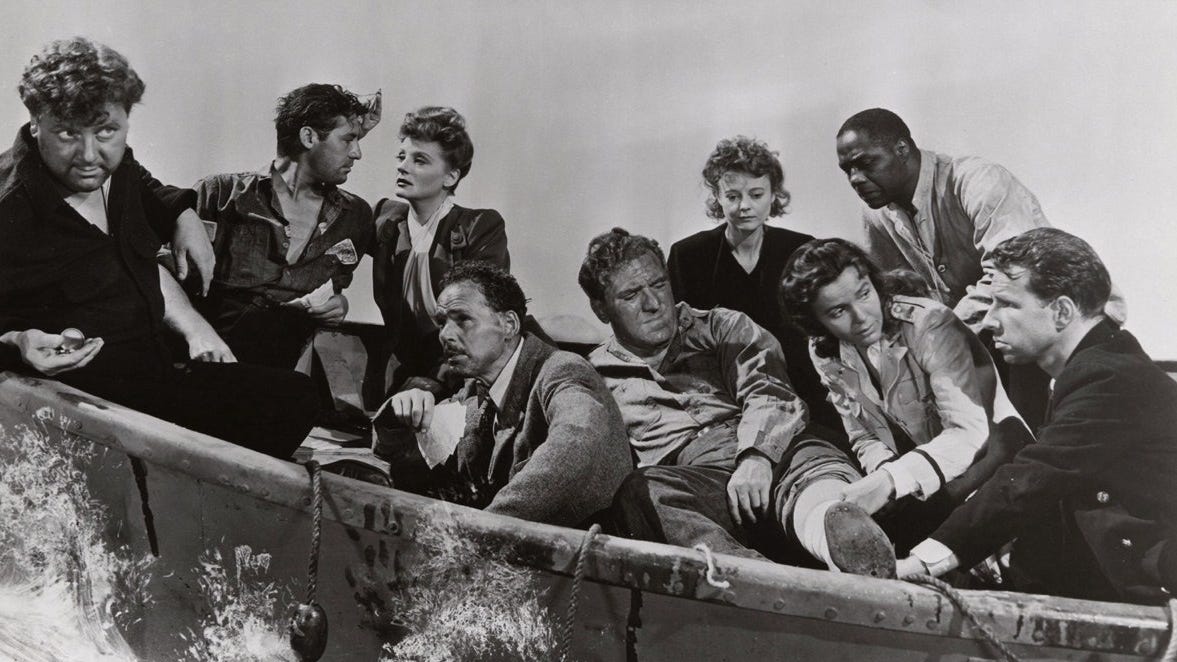
As others in town found out about it though, they began to pile on, like shipwreck survivors swamping a tiny lifeboat. Speeds began to drop precipitously, and what was 700Kb/sec soon became 400, or lower. Sometimes barely running at dialup speed, I called our support people in the town Light Department. They told me that the relay poles in some neighborhoods were oversubscribed, and that I could get a better signal if I used a different antenna, and connected directly to the mountain base antenna.
But here was catch. In order for this to work, you needed to have line-of-sight. And at my house, this involved dealing with trees. Lots and lots of trees.
Defying Death for Internet
The Light Department dropped off an improved, direct-link “VL Modem” system for me to try, assuming I could get a signal to the mountain. It featured a little set of lights that were either one red (no signal), or up to 5 green on (full signal). I climbed my roof, one red light. Garage roof, one red. Back yard, front yard, side yard. Red, red red. Where I could previously get a clear angle to a satellite, the view west towards the promised mountain-of-broadband was hopelessly obscured by trees.
At one point, I got out my 16-foot extension ladder, put it up a tree in my front yard, climbed to the top, while also holding this antenna and trailing cable. Still one red light. Then above, I could see I could climb higher. I stepped off the ladder and went up a few branches. Red light. A few more. Red light. Next thing you know, I am up in a tree about 30 feet, shaky branch in one hand, WiMax antenna in the other, with its taunting red light.
I think it was around then that I started to remember other things like, my own mortality. It’s very possible to survive a 30-foot fall, but also quite possible to die, or be pretty badly injured. Was high-speed internet worth the risk? Maybe... Maybe. But even if so, the light was still red.
Luckily, a friendly neighbor of mine came to the rescue. He worked for the light department and routinely climbed things and spent time high up, and in general seemed less concerned with self-preservation in the face of heights, at least. He offered to climb a very (100 foot) tall pine tree next to my house, and mount the dish up there. For liability reasons, I clearly should have said no. But I clearly said yes. Because I was desperate. And I was tired of buffering movies, and missing meetings, and having to send my kid to the library on a rainy Sunday night to upload her homework assignments.
Up my neighbor climbed, fearlessly, antenna and cable in tow. When he reached the 80-foot mark of this tree, he cried out, “I have seen the Mountain!” Or at least, that’s how I choose to remember it. The antenna gave a very promising score of four out of five green lights. He cut away some branches to improve the opening, bolted the antenna to the tree, and stapled the cable all the way down.
And I was getting a ‘fast’ 1MB/sec from the system. It was fantastic. Things were running smooth, commuting, even Netflix. I did worry about maintaining it. And also maybe lightning. Sometimes I would go out at night and peer up the base of the tree. I could just make out the blinking green lights, 80 feet above, showing me I had a signal. It made me strangely nervous.
Hey AT&T, Can You Spare Me a GB?
Things ran OK for some time, into the early 2010’s. But it did not last. While others were getting FiOS and promises of 1GB cable connections from multiple competing providers in their towns, I was making do with my wireless system, which was once again degrading in performance — 1MB/sec had dropped back into the K’s. And sometimes dropping out altogether. There were yet more data-starved town subscribers on the system, and also I suspected branches had grown in on my internet tree, or the antenna had gotten out of alignment. I didn’t really have an easy way to go up and check.
Eventually, during an unexplained outage, I messed around with the base modem enough that it caused some sort of firmware reset to the antenna system, which could only be fixed by climbing the tree. My fearless neighbor meanwhile had moved away. And the whole WiMax town system had been sold off to a private ISP, that was flabbergasted when they sent a tech out and found that my antenna was up in an 80-foot tree. They flat out refused to service it.
They reverted me back to a regular non-direct antenna, to the local, overcrowded relay pole. It worked but was slower, slower even then my cell phone data speed. So then I started shopping for a good cellular data plan. The array of plans and prices was, and to this day is, very confusing. Eventually I was able to get some deal for 30GB/month at a reasonable price from AT&T, coming full-circle back to the phone company for my internet. It was responsive enough to work from home on, and speeds sometimes got up to 3 or 4 MB/sec.
But when we tried to use it for general home internet, that 30GB budget disappeared, almost instantly. I would get ominous text warnings about reaching my data cap, with some outrageous overage cost per MB I went over. Also, my part of town continued to be the black hole of information, because the nearest cell tower was far away from my house. This meant having to put my cell modem in strange places, and the familiar rain fade/delays.
When I complained about all this (constantly) to my broadband-entitled coworkers, they shrugged.
“Where do you get your internet from anyway?” they asked.
“A Tree. A very tall tree.” I would answer, dejectedly.
“Why not just move?” they suggested (after a lot of snickering).
In the past this suggestion seemed ridiculous. Move, from a place I otherwise really liked, just for internet? Surely there is a better solution. But things had gotten desperate, and in fact had motivated other people to move out of town, and also prevented sales of homes in town. But hope was around the corner.
Mr. Smith Goes To Town Meeting

Somewhere in the early 2010’s, a state program, the Massachusetts Broadband Institute (MBI) was formed to help internet-underserved communities, and started funding the build-out of a fiber backbone through the western part of the state. Many of these towns were even more rural than ours, and were still on dial-up in 2012.
Our town was further east, in a zone that should in theory be fully connected. So we were actually outside of the target set of towns they picked for the program. When I read about it, I was really frustrated, and I sent a letter to our state representative.
I was not historically a letter-writer type, but this was as good a reason as any to start, I figured. I (and honestly, probably a lot of others) asked that our town be included in this new MBI program. After that, for whatever the reason, our state rep did put in a good word for us with MBI, and they modified their plans to include our town in the program. The plan would involve the routing of a fiber optic connection to the internet backbone to each town, and granting some unspecified amount of money to help pay to build the ‘last mile’ to peoples houses.
After this decision was announced, our Town Select board put an ad in the local paper, asking for qualified and interested citizens to apply to be part of a Broadband Committee, to help the town make decisions and move forward with creating a high speed internet system.
I hated writing letters and hated the word ‘committee’ even more. I had climbed tall trees, stayed on hold for hours, begged phone company employees, braved frigid temperatures to clean icy satellite dishes. Not to mention spending many hundreds, maybe thousands, over the years, just to get a better connection.
But now I was contemplating the unthinkable: getting involved with town politics.
Next Time: Things heat up. Fighting, screaming, suspected yard-sign stealing, and not even on an election year. Also, I accidentally disconnect the towns 911 system. And it all ends with drinking moonshine in the town hall.
Don’t miss the exciting conclusion, click here for: Thin Pipe, Part II !
Enjoyed this post? Why not subscribe? Get strange and nerdy tales of computer technology, past present and future - delivered to your inbox regularly. It’s cost and ad free, and you can unsubscribe any time.
Already signed up? You can also share this post with your internet-starved friends!



